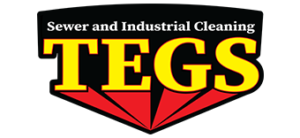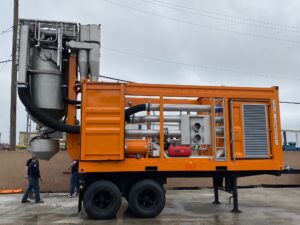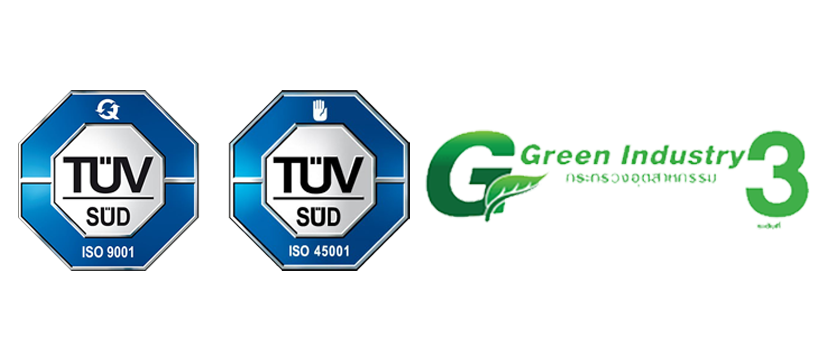Safely and Efficiently Handling Catalyst Suction
Handling catalyst suction in industrial settings is a critical aspect of maintaining operational efficiency and safety. Catalysts used in various chemical processes often accumulate residues and deposits that need to be periodically removed to ensure the equipment continues to operate at peak performance. The process of catalyst suction involves extracting these substances using specialised equipment, minimising downtime and ensuring that the plant runs smoothly.
One of the primary concerns when performing catalyst suction is ensuring the safety of the personnel involved. Catalyst materials can be hazardous, requiring careful handling and appropriate safety measures to prevent accidents. Moreover, efficient removal of catalyst residues is essential to avoid contamination of new catalysts and to ensure the longevity of the equipment. Proper training and equipment are fundamental to achieving these goals.
In industrial cleaning, we have adopted advanced techniques and tools to handle catalyst suction more effectively and safely. By using high-pressure water pumps and specialised suction equipment, we can remove catalyst residues thoroughly without compromising safety. This introduction sets the stage for a detailed exploration of the importance of safe handling, the techniques and equipment used, and the best practices in catalyst suction.
Importance of Safe Handling During Catalyst Suction
Safe handling during catalyst suction is critical to protect both the workers and the equipment involved. Catalysts often comprise hazardous materials that can pose severe health risks if improperly managed. Exposure to these substances can lead to respiratory issues, skin irritation, or other serious medical conditions. Therefore, ensuring all personnel wear appropriate personal protective equipment (PPE) and follow safety protocols is essential for reducing these risks.
Moreover, improper handling of catalysts can lead to contamination and equipment damage. Residues and deposits must be removed carefully to prevent contaminating new catalyst loads, which could compromise the efficiency of industrial processes. Mismanagement can also cause wear and tear on the machinery, leading to more frequent breakdowns and costly repairs. By prioritising safe handling, we not only protect our workers but also maintain the integrity and longevity of our equipment.
Proper training is another crucial component of safe handling in catalyst suction. Employees must be educated on the specific hazards associated with the materials and the correct procedures for their removal. Regular safety drills and refresher courses can help ensure that everyone remains vigilant and up-to-date with the latest safety practices. When everyone understands and adheres to these guidelines, we create a safer working environment for all.
Techniques and Equipment for Efficient Catalyst Suction
Using the right techniques and equipment is key to efficient catalyst suction. State-of-the-art high-pressure water pumps, capable of operating at up to 3000 bar, are indispensable for this task. These pumps generate powerful jets of water that can dislodge even the most stubborn catalyst residues from industrial equipment. The high pressure ensures a thorough cleaning, leaving no trace of contaminants behind and preparing the equipment for its next use.
Specialised suction equipment is also essential for optimum efficiency. Automated suction systems can remove dislodged catalyst materials quickly and safely, reducing the need for manual labour and minimising the risk of exposure to hazardous substances. These systems are designed to handle various types of catalyst residues, ensuring versatile use across different industrial settings. They also help to streamline the cleaning process, enabling us to complete tasks more swiftly and with greater precision.
Additionally, advanced techniques such as remote-operated vehicle (ROV) systems and 3D head technology can further enhance the efficiency of catalyst suction. ROVs can access hard-to-reach areas within industrial machinery and perform cleaning tasks that would be difficult or dangerous for human workers. 3D head technology, with its multi-directional rotation, ensures comprehensive coverage, leaving no spot untouched. Utilising these advanced tools and techniques not only improves efficiency but also enhances safety and reliability in catalyst suction operations.
Best Practices for Ensuring Safety and Efficiency in Catalyst Suction
Ensuring safety and efficiency in catalyst suction requires adherence to established best practices. One crucial practice is to conduct a thorough risk assessment before beginning any suction process. Identifying potential hazards and planning for contingencies helps mitigate risks and ensures the safety of all personnel involved. Using detailed checklists and safety protocols can guide the team through each step, ensuring nothing is overlooked.
Another best practice involves regular maintenance and calibration of equipment. Proper upkeep of high-pressure water pumps, suction systems, and other specialised equipment ensures they operate at peak efficiency and reduces the chances of malfunctions. Regular inspections can help identify any wear and tear early, allowing for timely repairs and replacements. This proactive approach minimises downtime and enhances the overall efficiency of the suction process.
Training and continuous education also play a vital role in maintaining safety and efficiency. Providing comprehensive training programmes for all employees, including hands-on practice and theoretical knowledge, equips them with the skills needed to handle catalyst suction safely. Regular refresher courses can help keep everyone updated on the latest techniques and safety standards, fostering a culture of continuous improvement and vigilance.
Conclusion
Catalyst suction is a vital process in maintaining the efficiency and safety of industrial operations. By adopting advanced techniques and equipment, we can ensure that catalyst residues are efficiently removed without compromising the safety of our personnel. High-pressure water pumps, specialised suction systems, and remote-operated technology collectively improve the thoroughness and speed of catalyst removal, ultimately enhancing the longevity and performance of industrial equipment.
Safety, however, remains a paramount concern. Implementing best practices such as risk assessments, proper equipment maintenance, and continuous training ensures that we minimise hazards and operate efficiently. The commitment to safety and efficiency in catalyst suction reflects our dedication to maintaining high standards in industrial cleaning.
If you’re looking for a professional team to handle your catalyst suction needs safely and efficiently, look no further than TEGS Thailand. Our expertise and state-of-the-art equipment ensure thorough cleaning and optimal performance for your industrial operations. Contact our certified industrial cleaners today to learn more about our services and how we can help you maintain a safe and efficient working environment.




